In this Post
–Visiting Gorakh Hill
–Visiting Mohenjo Daro
–Visiting Keenjhar Lake
–Visiting Shah Jahan Mosque
–Visiting Banbhore
–Visiting Faiz Mahal
–Visiting Kot Diji Fort
–Visiting Ranikot Fort
–Visiting Sukkur Barrage
–Visiting Chaukhandi Tombs
–Visiting Kirthar National Park
Located in the southeast of Pakistan, Sindh is a region that enjoys amazing topography and rich history. The province is also known as “Bab-ul-Islam,” which is an Arabic phrase meaning the “gateway of Islam.” According to many historians, Islam first entered the Indian Subcontinent through Sindh centuries ago, when Muslim general Muhammad bin Qasim landed at the port of Deebal in 712 A.D. In a nutshell, tourism in Sindh is all about history; you get to enjoy a vibrant mix of present and past cultures along with natural beauty. So, if you are also ready to take on your next travel adventure, then you are in luck. In this blog, we will explore some of the most amazing tourist attractions in Sindh, which can become delightful additions to your travel bucket list.
So, let’s get packing!
Exploring the Famous Tourist Attractions in Sindh
We will first list down and discuss some of the most famous tourist spots in Sindh that will excite all our readers who are history buffs and/or adventure-seekers.
- Gorakh Hill
- Mohenjo Daro
- Keenjhar Lake
- Shah Jahan Mosque
- Banbhore
- Faiz Mahal
- Kot Diji Fort
- Ranikot Fort
- Sukkur Barrage
- Chaukhandi Tombs
- Kirthar National Park
Gorakh Hill Station
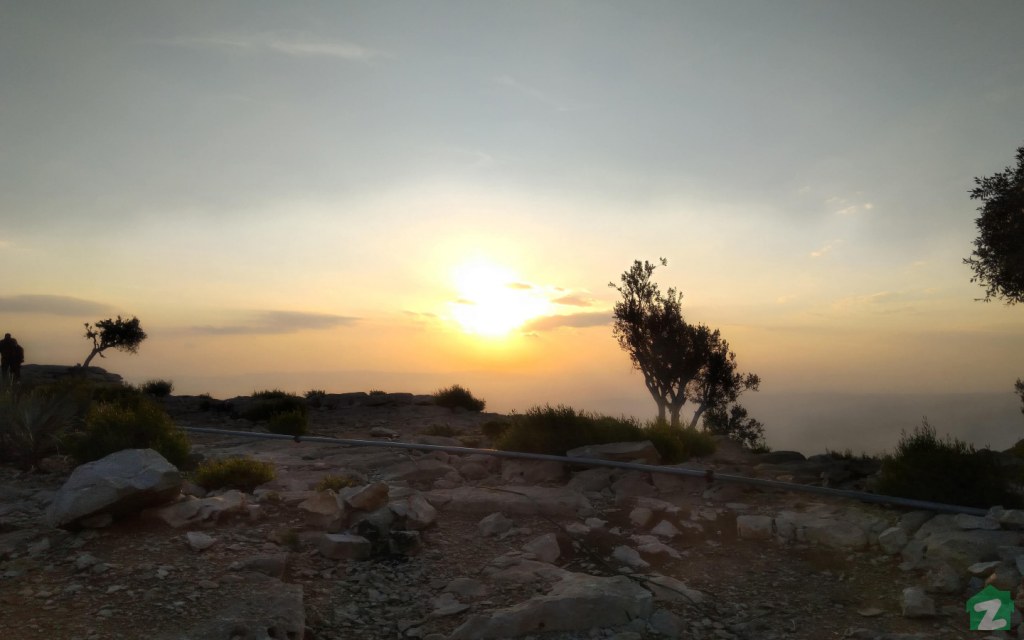
One of the most famous hill stations in Pakistan, Gorakh Hill is among the tourist spots in Sindh that live up to the hype. Found within the heart of Sindh in Dadu District, the hill station is amazingly located at an altitude of 5,688 ft (1,734 metres) above sea level and is popularly known as the ‘Murree of Sindh.’ Gorakh Hill was first discovered during the British Raj in the 1860s, which was completely developed and launched as a hill station more than a decade later in 1989.
Adventure-seekers from all over the country come here to enjoy the awe-inspiring panoramic natural views that the hill station has to offer as well as stargazing at night with special bonfire arrangements. To facilitate the tourists visiting the region, there is a campsite, a restaurant, and a motel. Since the number of visitors to the place is growing with each passing year, plans to upgrade the route to the Gorakh Hill Station are in the pipeline to make this tourist destination in Sindh easily accessible. It is located 94 kilometres from the city of Dadu.
If you have plans to visit Gorakh Hill from Karachi, you can consult with many travelling agencies offering trip packages for the hill station. Food, accommodation, camping equipment, and transport are offered on these tours. Due to high elevation, Gorakh Hill witnesses interesting weather patterns throughout the year.
It is one of the coldest regions in Sindh with temperatures dropping below zero in winters and going to a maximum of 20 degrees during the summer season. A 2-day trip to Gorakh may cost you around PKR 6,500 to PKR 7,500. The tour cost may vary depending on the agency you choose. The distance from Karachi to Gorakh is 403 kilometres, which is a drive of around 7 hours. For your journey to Gorakh Hill, a 4×4 car will be the most suitable vehicle. Meanwhile, you can also check out our travel guide to Gorakh Hill and learn about different ways to make the most of your trip to the hill station.
Location: 94 kilometres Northwest of Dadu City
Timings: Open 24 hours
Mohenjo Daro
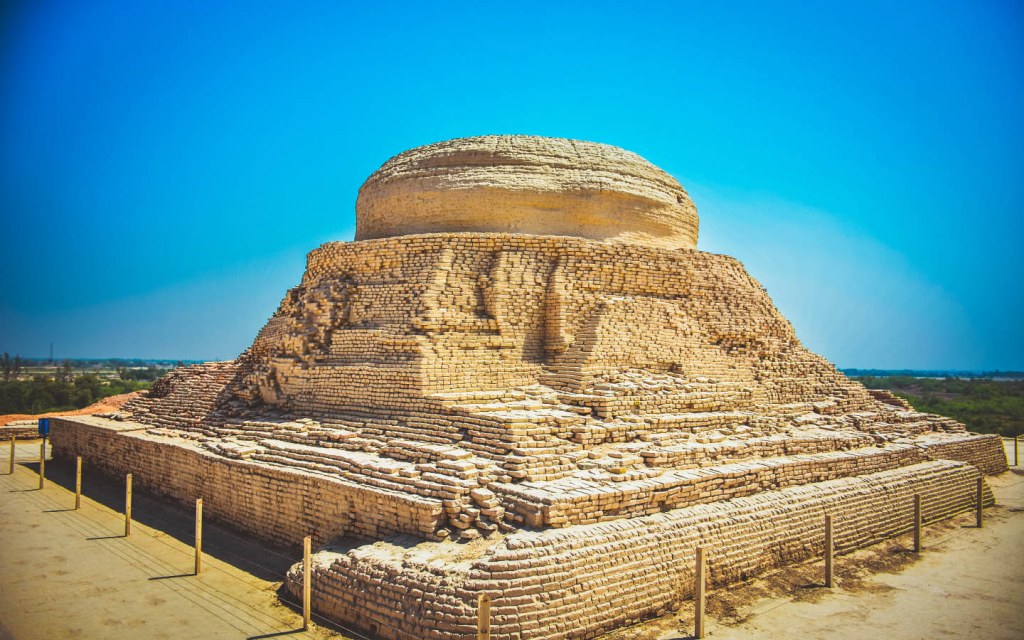
The city of Mohenjo Daro is one of the most famous UNESCO World Heritage Sites found in Pakistan. As per the findings of archeologists, the history of Mohenjo Daro is thousands of years old, dating back to 26th century BC. This ancient city was a part of the major urban settlement of the Indus Valley Civilization, also known as Harappan Civilization. Mohenjo Daro is a word derived from Sindhi, a language spoken locally in the region, which means ‘Mound of the Dead’.
For more than 3,700 years, the ancient site of Mohenjo Daro remained undiscovered. However, some impediment findings in the 1920s led to large-scale excavations that finally unearth the archeological gem of Mohenjo Daro. The excavation activities were led by John Marshall, who was the then Director-General of Archeological Survey of India.
At a distance of 5 kilometres from the Mohenjo Daro airport, the majestic 5000-year-old ruins are ideally located away from the hustle and bustle of any metropolitan areas of the province. Mohenjo Daro is also counted among the most famous historical attractions in Sindh from where many ancient artifacts have been unearthed. These include different types of tools made from materials like stone and copper, sculptures, measuring instruments like balance-scale and weights, jewellery articles, and toys. These antiquities are displayed in the Mohenjo Daro museum, which is located at a distance of around 800 metres from the archeological city of Mohenjo Daro.
Travelling by air from Karachi to Mohenjo Daro will take at least an hour. However, due to the lack of advanced features and infrastructure, only smaller aircraft can land and take off from here. The rate of a one-way airfare to/from Mohenjo Daro is around PKR 6,000, which varies from airline to airline. If you are visiting the historical site by road from Karachi, it will be a six-hour drive. Similarly, you can also take a train from Karachi to Dokri, which is a small town located at a distance of 7 kilometres from Mohenjo Daro.
Location: 38 kilometres south of Larkana City
Entry Fee: PKR 10 for locals and PKR 200 for foreigners
Timings: 8 am till 7 pm (from April to September) and 9 am till 5 pm (from October to March)
Keenjhar Lake
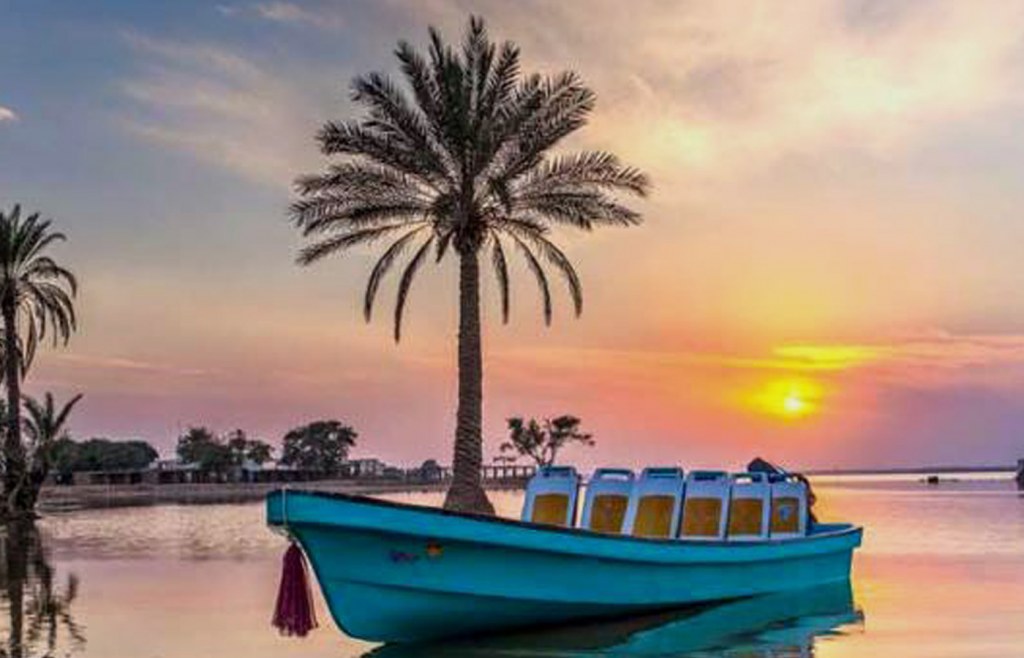
Keenjhar Lake, popularly known as Kalri Lake, is one of the most wildly underrated tourist destinations in Sindh. Extending over 134 km sq, it is the second-largest freshwater lake in Pakistan. It is a man-made reservoir formed as a result of the construction of an embankment, which resulted in the union of two lakes: Sonehri and Keenjhar as well as many local streams that drain into the lake to form a large water body. The lake has been declared as a wildlife sanctuary and serves as a safe habitat for many local and migratory bird species including ibises, terns, egrets, coots, geese, ducks, herons, flamingos, cormorants, waders, and gulls.
To get to this tourist destination in Sindh from Karachi, you need to travel a distance of around 100 kilometres, which will take you an hour or so if you are travelling at a speed of 80-90 kilometres. The best route to take while travelling to Keenjhar Jheel is the route of National Highway 5, which is an 1819 km long highway extending from Karachi to Torkham in Khyber Pakhtunkhwa.
Tourist to Keenjhar Jheel can comfortably stay at Keenjhar Lake Resort, which has been by Sindh Tourism Development Corporation as one of the public-private partnership projects to promote tourism in Sindh. It is a well-maintained resort that can be booked for around 8k to 10k a day. However, you may need to check the availability of the resort and book it online in advance with the help of their online booking service. You can even wind up your trip to this picnic spot in Sindh with a hearty meal available at Noori Restaurant, which is a part of Keenjhar Lake Resort.
If you are a seafood lover and want to enjoy a fresh catch, then Keenjhar Lake is the place you need to be as it is considered one of the most famous fishing spots near Karachi. In fact, according to a recent development, Abdul Bari Pitafi, who is the minister of livestock and fisheries department in Sindh, headed an initiative almost a year back that proved to be an impediment step for the revival of fishing in Keenjhar. The project was carried out in several phases in which around 600,000 seeds of fish were released in the lake’s water. Apart from fishing, you can indulge in other fun outdoor activities like swimming, boating, and jet-skiing. On a side note, sunset by the lakeside also looks mesmerising.
Note: Don’t forget to wear lifejackets on your boat trips in Keenjhar Jheel as the water of the lake is very deep.
Location: Situated around 36 kilometres north of the historical city of Thatta
Timings: Open 24 hours
Shah Jahan Mosque
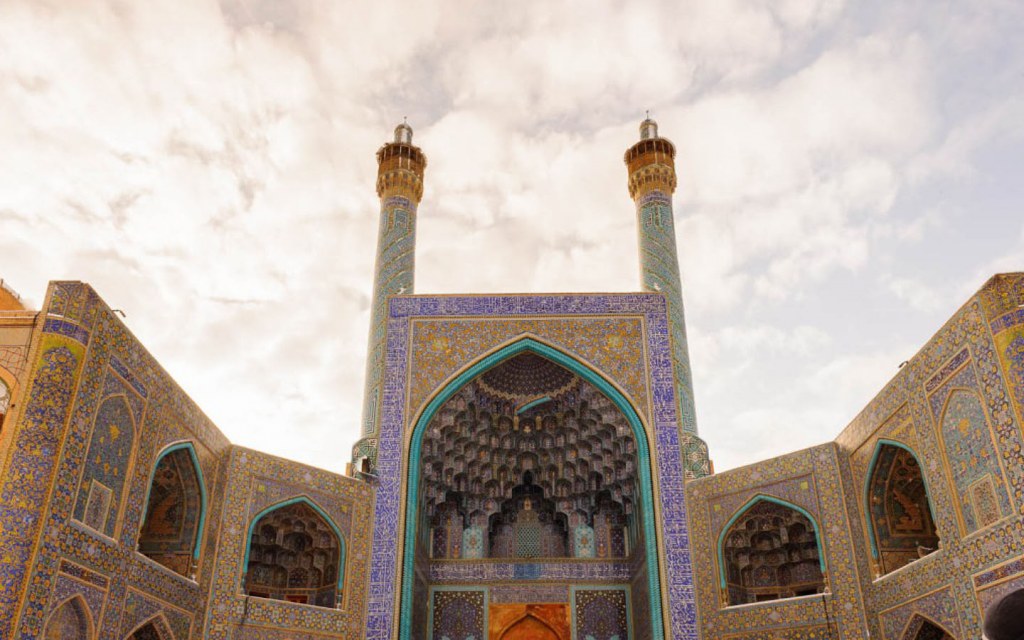
The Shah Jahan Mosque, which is one of the most attractive remnants of the Mughal era in the region, acts as the Jamia Mosque for the city of Thatta. The construction of this beautiful historic landmark began in the year 1644. While residing in Thatta, Mughal Emperor Shah Jahan ordered the construction of the mosque, which is why it was named after him. It took a period of over three years for this magnificent structure to be built. The gates of this masjid were officially opened right after its completion.
Reflecting a construction style of the Mughal era in a captivating way, the architecture of the Shah Jahan Mosque also been inspired by the regional styles of construction including Sindhi, Timurid, Persian, and Indian. The structure of the exterior and interior of this mosque has been built with the help of red bricks, However, the interior also adorns intricate tile work and geometric patterns that further enhance its beauty. One of the unique features of Shah Jahan Mosque is that its exterior features the largest number of domes found in a single structure in Pakistan. The number of domes can be anywhere between 93 and 100. As you enter the mosque, you’ll be greeted by a beautifully constructed fountain, which greatly enhances the structure’s overall look and charm.
With a magnificent exterior featuring blue, turquoise, and magenta tiles, the main prayer hall is considered the jewel in the crown. If we talk about the interior of the dome, it offers a delightful mixture of similar colours along with the hints of red, white, and yellow in the background. Since Shah Jahan Mosque features nearly 100 domes, several smaller domes and arches can be found around the courtyard. The place also displays amazing patterns of geometrically formed brickwork. All these unique features make the mosque one of the best tourist destinations in Sindh.
The location of Shah Jahan Mosque is the eastern edge of Thatta. It is close to the intersection with Sujawal-Thatta Road of the National Highway 5. The total distance of Shah Jahan Mosque in Thatta is about 100 kilometres from Karachi, which is a drive of around 2.5 hours.
Location: Syed Luckyari Mohalla, Thatta
Timings: Suitable to be visited during the daytime
Bhanbore
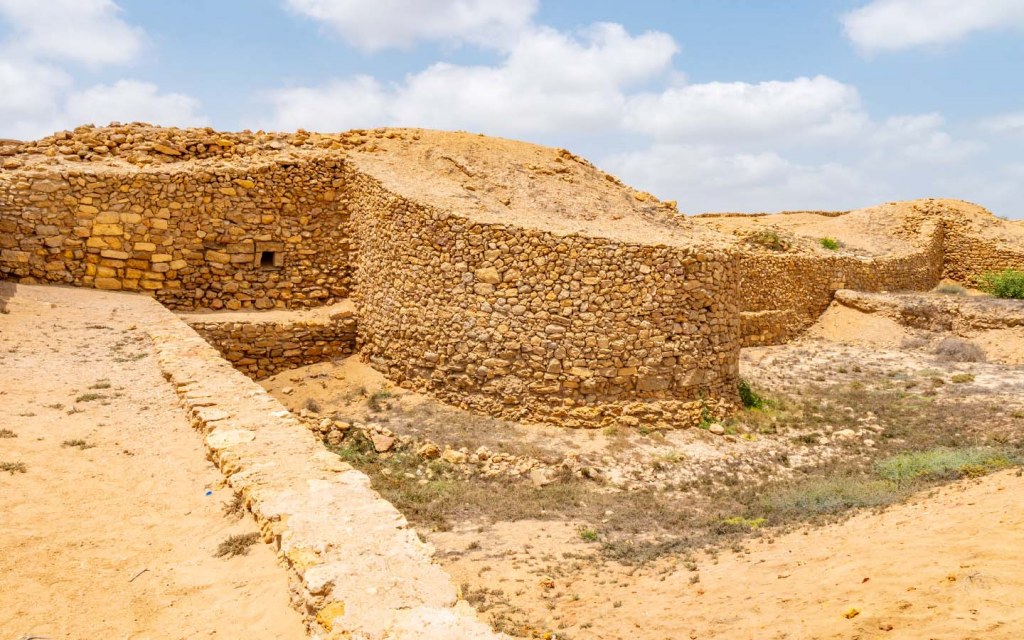
Located around 65 kilometres east of Karachi is Banbhore, one of the most fascinating and mysterious historical attractions in Sindh. The site is often spelled as “Bambhore” and has played a significant in the history of Islam in South Asia. According to the findings of some historians, the site of Bhanbore has the remnants of the ancient city of Debal or Daybul. It is the same city where Raja Dahir, a famed Hindu ruler of the time, was defeated by the Arab commander Muhammad bin Qasim, who was a courageous Muslim conqueror in the Islamic and political history of the subcontinent.
On the other hand, as per some other archeological records, the history of Bhabhore has turned out to be far older than the history of Islam, dating back to the first century BC. If we accumulate all the historical records together, we come to the conclusion that the site was ruled by Scytho-Parthian (from first century BC to the second century AD), Hindu-Buddhist (from second century AD to the eighth century AD), and Islamic Rulers in South Asia (from eighth century AD to the thirteenth century AD). There are the remains of an ancient mosque with an inscription, which is believed to be over 1200 years old. It is found on the eastern side of Bhanbore and is, hands down, one of the most well-preserved examples of the oldest mosques in the region.
One of the most prominent landmarks on the site is a 10-metre tall mound located near the shore of Gharo Creek. Bhanbhore once hosted a fully operational port known as ‘Debal Port’, which dates back to as old as the medieval period. Obviously, the port is not functional anymore but its history still amazes a lot of people. Since the main source of the potable water supply of this ancient city was River Indus, the fate of the city was greatly dependent on the flow of this river. So, when Indus changed its course in the 13th century, the city was abandoned and was never inhabited again. The folk tale of Sassi and Punnu is also associated with this tourist destination in Sindh and it is often called “the city of two lovers”.
Sindh Coastal Highway runs through the city of Bhanbore, making it one of the most easily accessible tourist attractions in Sindh. Linked with National Highway 5, it is also the best route to take if you are planning to visit this archeological site from Karachi. Sunway Lagoon, one of the most famous water parks in Karachi, is also at a distance of just 16 kilometres from the site of Bhanbore. Moreover, if you are willing to stay in Bhanbhore, the accommodation is available at Bhanbhore Rest House, which has been recently renovated. You can rent a room for a night in Bhanbore Rest House for as low as PKR 1,500. The temperatures in Bhanbore can reach up to 45 degrees celsius, which means winter is the best time to visit the site.
Location: Coast of Debal Beach, 65 kilometres from Karachi
Entry Fee: Starting from as low as PKR 10/-
Timings: 7:30 AM to 5:30 PM (During Summer) and 7:30 AM to 5:30 PM (During Winter)
Faiz Mahal
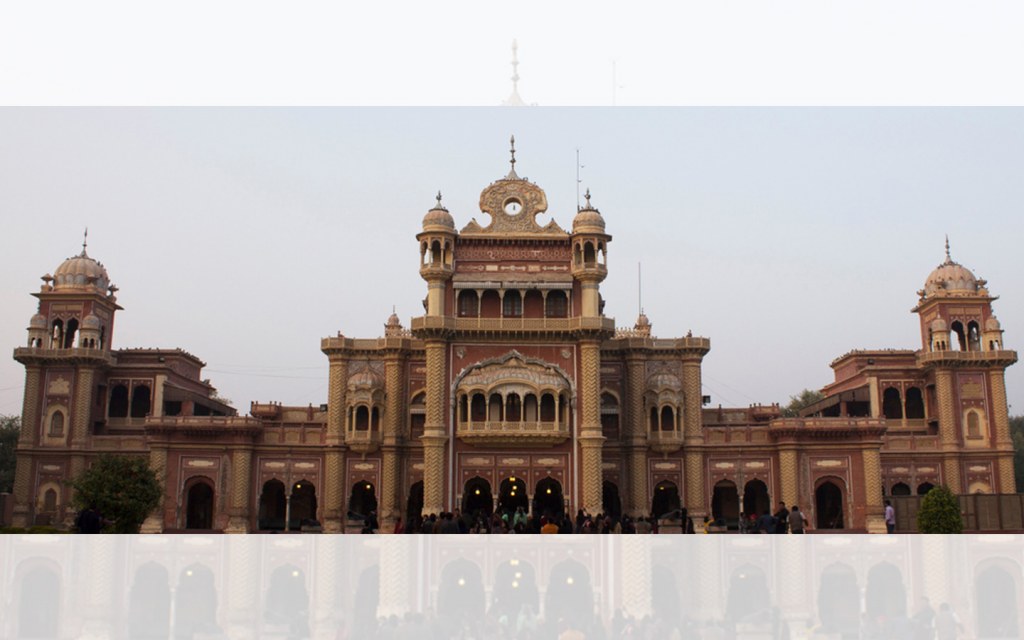
The city of Khairpur is located in one of the most historically rich regions in Sindh. Once ruled by Talpur Mirs, Khairpur is home to some of the most famous tourist spots in Sindh. Faiz Mahal is one fine example in this regard. It is a structure that was constructed back in 1798 by one of the rulers of the Talpur Dynasty. However, if we take a look at the current condition of the interior and exterior of Faiz Mahal, it doesn’t look and feel like a two hundred years old structure. Maintaining the originality and curb appeal of a centuries-old structure is a highly challenging and backbreaking task. However, in the case of Faiz Mahal, the credit goes to the descendants of the Talpur family and also thanks, in part, to the untiring efforts of the Sindh Tourism Development Corporation (STDC). Since the site is meticulously maintained, the architecture of this stupendous citadel is intact in its original form.
Faiz Mahal once served as the Talpur rulers’ court. It featured a ruler’s chamber as well as a total number of sixteen waiting rooms designated for courtiers and other royal personages. To facilitate the stay of royal guests, guest rooms were constructed near the darbar and dining hall. Upon reaching the middle of the Faiz Mahal’s building, you enter into a big central hall where you can see portraits of the Maharajas and princes of the Talpur family. The exterior and interior of the building have been designed on the awe-inspiring patterns of the Mughal Architecture. awe-inspiring. Some of the finest artworks and unique calligraphy work adds to the charm of the palace. Since it is one of the most historically eminent places to visit in Sindh, the site is famous for hosting the shooting activities of different dramas and films produced locally. To get to Faiz Mahal from Karachi, it will take you around a six-hour drive, if you take the route of Karachi-Hyderabad M9 Motorway and National Highway 5.
Location: DCO House Road, Khairpur
Timings: 8:00 am to 7:00 pm (In Summer) & 9:00 am to 6:00 pm (In Winter)
Kot Diji Fort
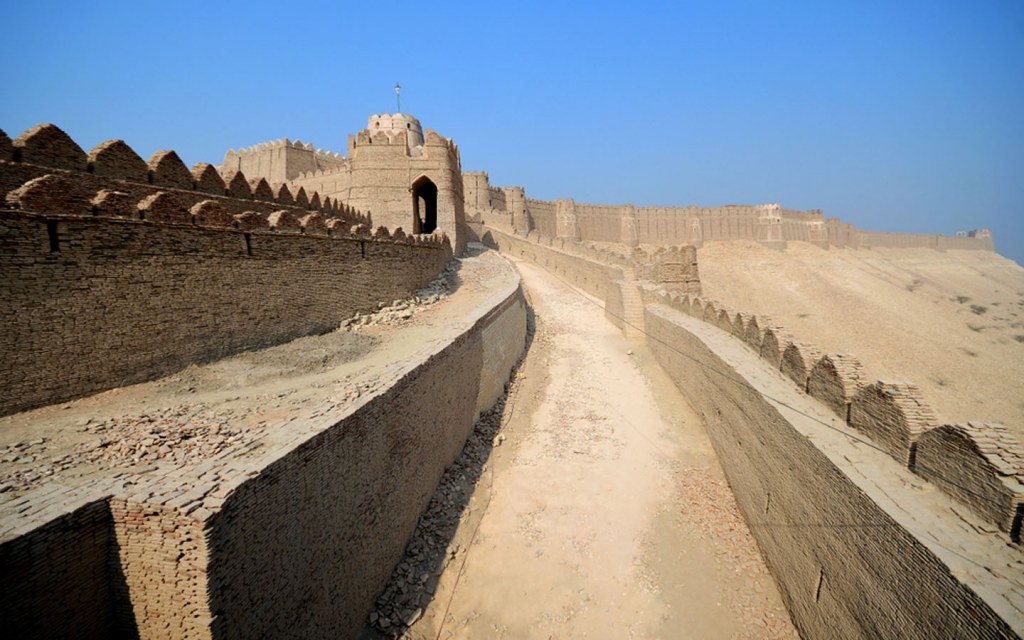
Kot Diji Fort, which is one of the greatest symbols of the Talpur dynasty in the region, is also found in the city of Khairpur. As per the historical records, the fort was built a hundred years ago in one of the remotest areas of Sindh of that time. This emblematic structure of the gigantic fort dominates the town of Kot Diji in Khairpur district, which is why it is popularly known as the Kot Diji Fort. Boasting a stupendous architecture, the construction of the Kot Diji Fort was completed in a period of ten years starting from 1785 to 1795.
It appears to be one of the most majestic forts in Pakistan with three strategically placed towers, measuring around 50 feet in height. The surrounding walls of the fort are 30 feet tall, encircling the uppermost portion. The total length of the boundary is around 1.8 kilometers. The fort has been built with limestone and kiln-baked bricks. The fort was also strategically equipped with a water reservoir for the storage and usage of potable water, which is one of the scarce resources in the region.
While roaming around the fort, you will come across some roofless rooms, which were once used for the storage of ammunition, known as Barood Khano in the Sindhi language. Kot Diji fort also has a prison, a courtroom and separate residences in the form of many cells for troops. The Royal Gate, locally known as Shahi Darwaza, is the only grand entrance to the fort. Heavy iron spikes were installed on the wooden gate, which prevented the enemies from trespassing the boundaries of the fort. It is one of the main reasons why Kot Diji Fort was never attacked.
Unfortunately, not much repairing and maintenance activities have been carried out for the preservation of this architectural masterpiece, which is why the fort has been constantly losing its originality and is deteriorating with time. If you are looking for some fascinating places to visit in Sindh, then you must have the Fort of Kot Diji on your bucket list, if you want to take an up-close look at the history of the region. If you are travelling from Karachi, it would take you around seven hours to get here by the route of M9 Motorway and National Highway 5.
Location: Off Kot Diji Main Road, Khairpur
Timings: 8:00 am to 7:00 pm (In Summer) & 9:00 am to 6:00 pm (In Winter)
Ranikot Fort
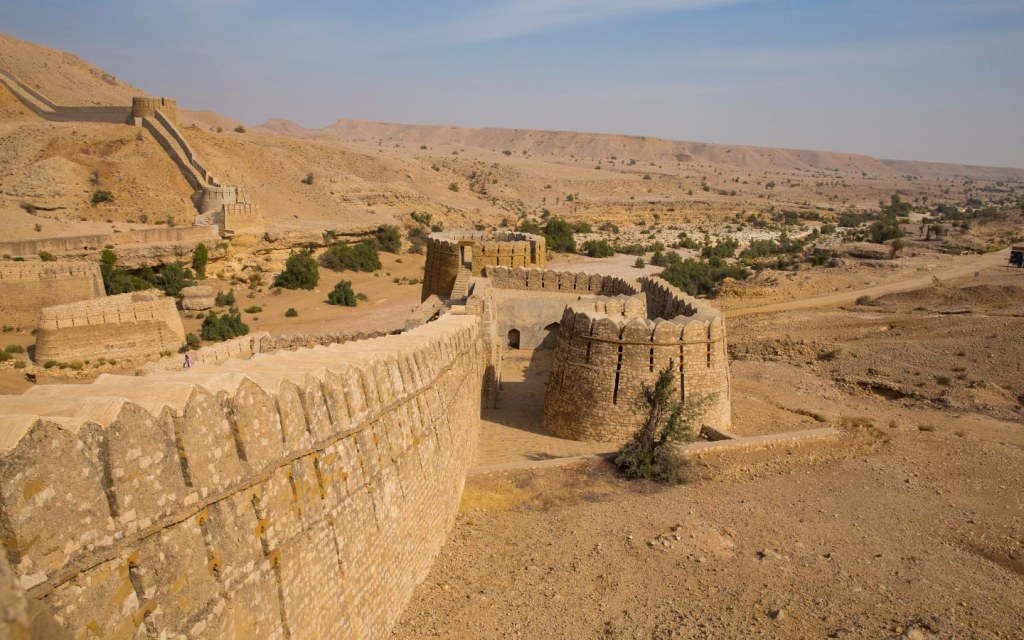
Counted among the most wonderful and mysterious places in Pakistan that fall off the beaten track, Ranikot fort is found in the middle of nowhere in one of the most isolated regions of Jamshoro District in Sindh. Standing majestically to date, the fort of Ranikot is also known as ‘The Great Wall of Sindh’. It is also believed to be the largest fort in the world as the circumference of the fort incredibly measures around 32 kilometres. The history of this fort dates back to the first quarter of the nineteenth century. The fortification walls are patterned up and down as per the natural contours of the hilly pastures and feature semi-circular bastions at different intervals, adding to the beauty of the exterior.
The fortification wall is only on the three sides of the structure, while the fourth side, which is the northern side is covered with the lofty peaks of the elevated hillocks. After travelling around 5-6 miles inside the boundary wall, you would come across a small fortress, about 5-6 which is believed to be the royal residence for the ruling family of Mirs. At the entrance of the fortress from the southern side, there is a double door gate. As you enter the fortress, you’ll find a couple of beautifully decorated ornaments, patterned with carved stones and floral designs. Upon your visit to the fort, you would notice that its whole architecture comprises only stone and lime, making it one of the most unique tourist destinations in Sindh.
If you are coming from Karachi, you can conveniently reach the fort by travelling through the route of National Highway 5. As soon as you depart from Karachi, you need to head to Dadu through the Indus Highway. Since it is one of the most important intercity roadlinks of Pakistan, the road is in excellent condition. It’s almost an hour-long journey to get to San, a small town of Sindh. As you go a little further from the town you will come across a diversion. There you will be greeted by a rusty board, which announces that you are some thirty kilometres away from Ranikot.
Bear in mind that the road leading to the historical fort is in a dilapidated condition. This makes the distance a little longer for you and it can be covered in 30 to 40 minutes. It would lead you to the town of Meeri, after which you need to cover a distance of a couple of kilometres. Abandon your car and start walking through a treacherous path for a few metres. This is how you can reach the eastern side of the fort through this off-beaten track. Upon reaching your destination, you can climb uphill along the boundary walls of the fort to enjoy the panoramic view of the landscape. on both sides as it offers a panoramic view of the landscape. However, if you are planning for an overnight stay near the fort, then you can also make a booking at a recently constructed Sindh Tourism Development Corporation (STDC) guest house, which is equipped with all the necessary features to facilitate your stay.
Location: Ranikot Fort Road, Jamshoro
Timings: Open 24 hours
Sukkur Barrage
Sukkur Barrage is located at the mighty River Indus, which is one of the most famous rivers of Pakistan. It was constructed during the British Raj in the 1900s and was initially called the Lloyd Barrage. The amount of annual rainfall in the region is very low, which is why Sukkur Barrage plays an eminent role in the distribution of water for irrigation use. It has a network of seven canals, running through it, which include Nara Canal, Mirwah Canal, Rohri Canal, Abul Wah on the left side, and Dadu Canal, Rice Canal and Kirthar Canal on its right side. The place is best known for offering you the most picturesque views of the River Indus. Locals have also reported having sighted the river water dolphins in the region around Sukkur Barrage, especially during the time when the water level is high. Nara Canal and Rohri Canal are the two biggest canals of Sukkur Barrage.
Nara Canal is not only the largest canal of Sukkur Barrage but also the largest canal of the country. Incredibly, it is a natural canal, which originates from the river of Sutlej and caters to over 2.3 million acres of agricultural land. Despite the fact that Rohri Canal is smaller than Nara Canal, it accounts for much more discharge than it. It has the capacity to provide water for around 2.6 million of cultivable land. With around 66 gates to control the flow of water, the structure of the barrage is extremely robust, designed to withstand tough weather conditions and flood-like situations. It is a hardly 15 minutes drive from Sukkur. Upon your visit to this picnic spot, you can also tour around Sukkur as the city is also home to many famous landmarks. If you have plans to visit Sukkur Barrage from Karachi, then you need to take the route of M9 Karachi-Hyderabad Motorway and National Highway 5. It is going to be a 7 hours long journey by car.
Location: On the Main National Highway 5, Sukkur
Timings: Open 24 hours
Chaukhandi Tombs
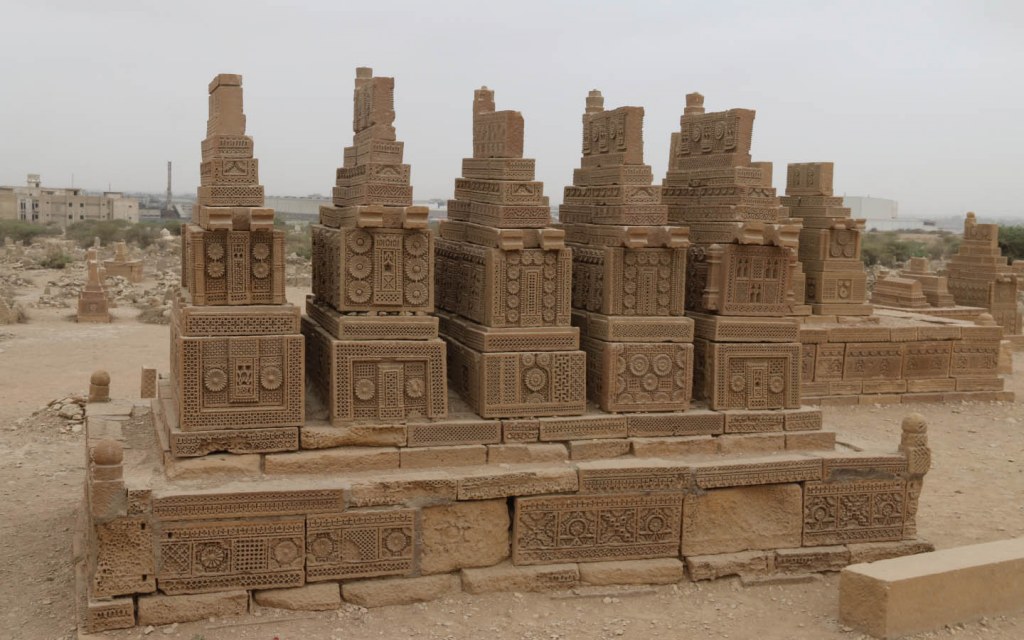
Known as one of the most famous tourist spots in Sindh, Chaukhandi necropolis is immensely popular among history buffs. It is one oldest graveyards in the region, which as per the historical records, was built during the period of the fifteenth to eighteenth century during the Mughal era. The historical graves of Chaukandi were brought into the limelight in 1971 by H. D. Baskerville, the then Assistant Collector of Thatta in Karachi. Enjoying a great historical eminence, the site was made a part of the Ancient Monuments Preservation Act In 1922.
Chaukhandi Tombs has a very captivating design, which reflects the characteristics of the local Sindhi and Balochi cultures. Beige-colored sandstones were used to build this historic graveyard, which of course have stood the test of times in Sindh, which is famous for having an arid climate. These graves are carved with unique designs and motifs. Different types of figures have been incorporated including that of horsemen, and hunting scenes on men’s graves. Women’s graves are adorned with the figures of jewelry to represent femininity.
Situated 29 km east of Karachi, it can easily take you around 40 minutes to reach your destination, making it one of the most easily accessible tourist destinations in Sindh. Chaukhandi Tomb is one of the best places to be if you want to take an up-close look at the ancient history of the region.
Location: National Highway N5, Landi Town, Karachi
Timings: Open 24 hours
Kirthar National Park
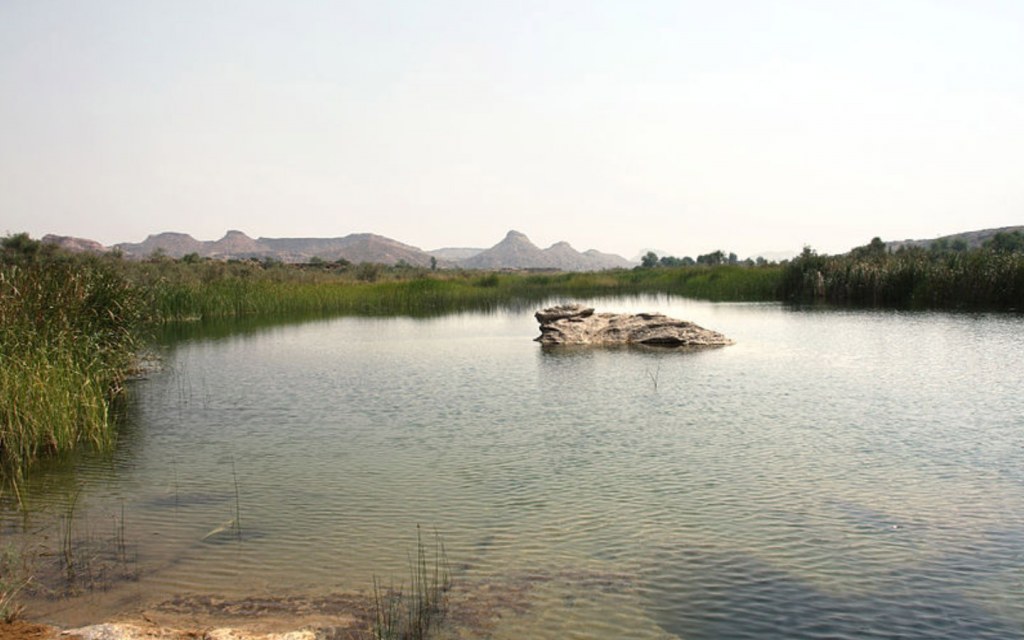
Kirthar National Park is the second-largest wildlife reserve in Pakistan, which was formed in the year 1974. As per the official records, the national park is a habitat of some of the rarest wildlife species on earth. These include leopards, wolves, chinkara, gazelles, striped hyenas, wild sheep, and ibex. Spanning around 3000 sq km, Kirthar National Park covers a huge area and has been divided into three different wildlife sanctuaries, including Hub Dam Wildlife Sanctuary, Mahal Kohistan Wildlife Sanctuary, and Kirthar itself. Moreover, the park is home to at least four game reserves, including Eri, Surjan, Hothiano and Sumbak. To facilitate tourists with their overnight stay, Kirthar National Park has two dedicated tourist centres named Khar and Karchat, where you can spend a night or two. The national park is looked after by the Sindh Wildlife Department. This includes keeping a record of wildlife, the maintenance of the park, smooth management of the tourism activities in the region as well as giving special permits.
Kirthar National Park is found in the ranges of Kirthar Mountain and is almost 160 km away from Karachi. The best route to take to get to the park is the Karachi-Hyderabad Motorway (M-9). It is also connected with the Indus Highway runs on its southeast side and linked via the RCD Highway (N-25) at its northeastern end. You will most probably need a 4×4 vehicle if you are travelling to Kirthar National Park, since the roads leading to the mountains are a bit bumpy, unlike the smooth highways. Along with tourist centres, Karchat and Khar are also the two main entrances of Kirthar National Park.
Location: Off Karachi-Hyderabad (M9) Motorway, Jamshoro District
Timings: Suitable to be visited during the daytime
Now that we have discussed our pick of the best tourist attractions in Sindh, it’s time for us to wrap up this piece. We hope you have enjoyed reading it and are already packing your bags. Our readers can get in touch with us at blog@zameen.com with their queries and suggestions.
Meanwhile, if you are a travel junkie, you should check out our blog on the best underrated tourist destinations in Pakistan. You can also check out our travel guides to different cities and northern areas of Pakistan including Gilgit Baltistan, Swat Valley, Broghil Valley, Kharian, Sialkot, Faisalabad, and Multan.
To read more about tourism in Pakistan, keep following Zameen Blog, the country’s leading tourism blog. Subscribe to our newsletter and get a daily email alert from our blog section.



